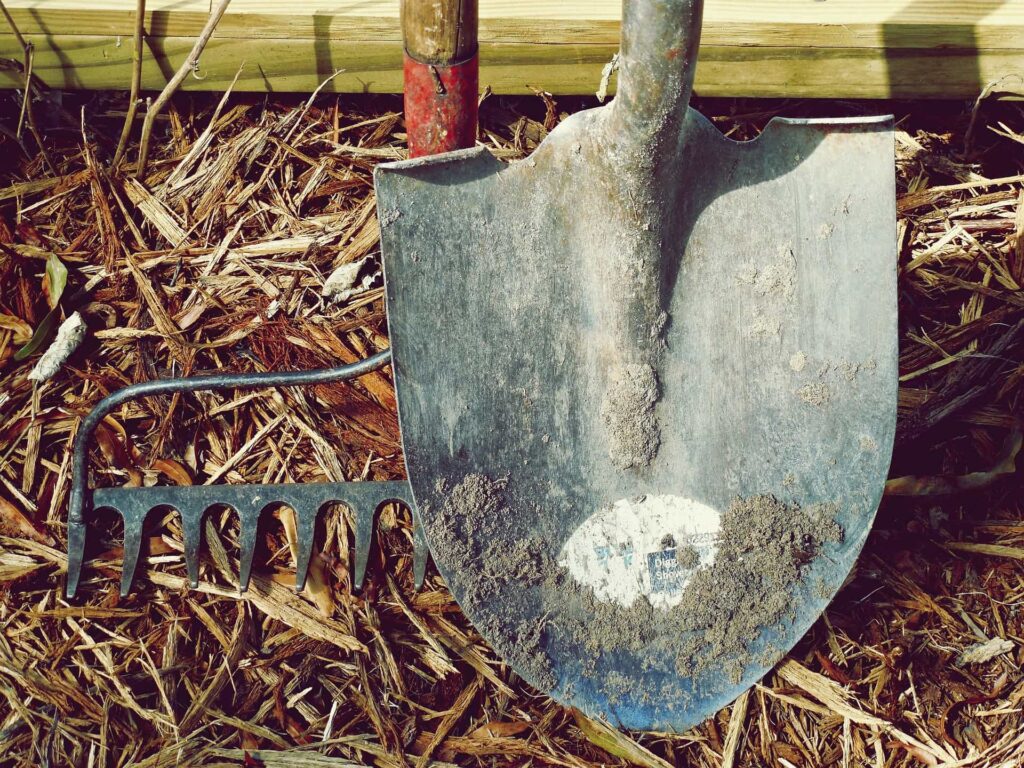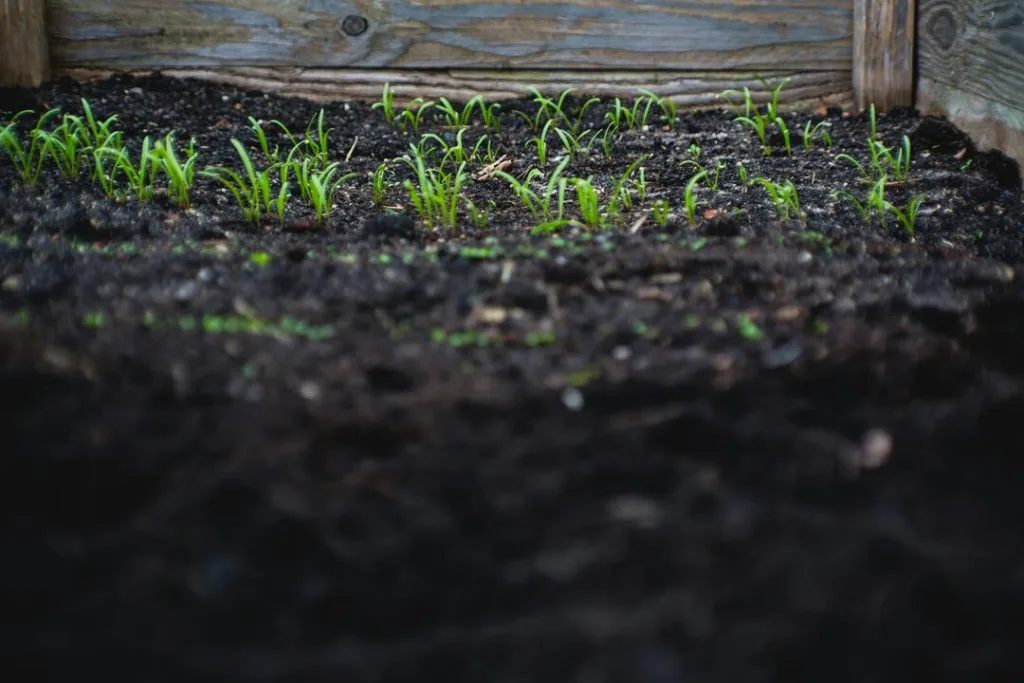Creating the picture-perfect lawn isn’t just about watering and mowing. A less visible but crucial aspect of lawn health is managing thatch—the layer of dead grass, roots, and debris that accumulates between the soil surface and the live grass blades.
If left unchecked, thatch can prevent water, nutrients, and air from reaching the soil, severely hindering your grass’s health. But don’t worry; you’re about to learn how to prevent thatch from becoming a problem in your beautiful lawn.
Introduction
Alright—ready to dive into the world of lawn thatch? Good, because knowing what you’re up against is half the battle in keeping your lawn looking fresh.
Lawn thatch is like that one guest who overstays their welcome at your cozy home party; it’s a layer of mostly dead turfgrass tissue lying between the green vegetation of your grass above and the soil and root system below. When it thickens, it starts blocking the good stuff—water, nutrients, air—from reaching the soil where your grass needs it the most.
Why does this happen? Several reasons—maybe you’re being a bit too generous with the fertilizer, cutting your grass too short, or maybe your watering routine is out of whack. As mundane as these things sound, they can lead to a thatch party that your lawn just doesn’t need.
Get ready to understand these culprits better and how their moderation is key to a pristine lawn. Let’s get into the nitty-gritty and keep that lawn of yours looking sharp.
Understanding Lawn Thatch
What is Lawn Thatch?
Imagine a tight, tangled layer, something like a messy, half-finished knitting project, but composed of dead grass, roots, and bits of leaf debris. This layer sits snugly between the vibrant green of your lawn and the soil underneath. Scientifically, thatch is a natural occurrence in lawns. It results from the slower decomposition of the tougher, fibrous parts of the grass, such as lignin in the roots and stems.
Causes of Thatch Buildup
- Rapid Grass Growth: Grass is a growing, living thing that sheds old parts as it renews itself. When grass grows too rapidly, often due to excessive fertilizer and water, it sheds faster than soil microorganisms can decompose these parts.
- Chemical Treatments: Heavy use of chemical treatments and pesticides can harm the microorganisms that help decompose organic matter, further contributing to thatch buildup.
Implications of Excessive Thatch
According to an entry on Wikipedia, thatch forms when the rate of organic material production exceeds the rate of decomposition. Although a normal process, excessive thatch (over half an inch) can lead to significant health issues for your lawn. Thus, maintaining a balance is crucial for achieving a healthy, envy-worthy lawn.

The Significance of Controlling Thatch
Let’s talk about the underappreciated layer of organic material on your lawn, commonly known as thatch. While a thin layer can actually help with moisture retention and protect the soil from extreme temperatures, problems start cropping up when thatch overs stays its welcome. When it accumulates beyond half an inch, it shifts from being useful to problematic.
Excessive thatch forms a thick barrier, making it tough for water, nutrients, and air to penetrate the soil, which your grass desperately needs to thrive. It’s like putting up a gate that keeps essential sustenance out, not what you want for a healthy lawn. Moreover, dense thatch becomes a comfy home for pests and diseases, turning your lawn into a battleground of decay rather than growth.
Now, why should you care? Because controlling thatch doesn’t just promote a healthier lawn—it uplifts the overall aesthetic of your outdoor space. A well-maintained thatch level means more robust and vibrant grass. When you manage thatch properly, you’re ensuring that water and fertilizer treatments aren’t just sitting on the surface but are actually reaching the soil where they can do good.
Think of it this way: good thatch management not only makes your current lawn care efforts more effective but also sets the stage for sustainable health and beauty of your grass in the long run.
Preventive Measures for Thatch Accumulation
Maintaining a healthy lawn involves consistent care rather than occasional drastic actions. Effective thatch management hinges on the basics of lawn maintenance, such as mowing, watering, and fertilizing techniques.
Proper Mowing Techniques
The way you mow can significantly influence thatch development:
- Keep Mower Blades Sharp: Dull blades tear at grass blades, which stresses the grass and makes it prone to disease, contributing to thatch buildup. Sharp blades ensure clean cuts that promote healthy grass growth.
- Correct Mowing Height: Always aim to cut no more than one-third of the grass blade length at a time to prevent stressing the grass, which can lead to thatch accumulation.
Recommended Watering Habits
Proper watering is crucial in preventing thatch:
- Avoid Overwatering: Excessive watering discourages deep root growth, leading to a shallow root system and a denser thatch layer.
- Deep and Infrequent Watering: Water your lawn deeply but infrequently to promote deeper root growth, which helps naturally break down thatch.
Right Fertilization Strategies
Choosing the correct fertilizer and application strategy is essential for thatch control:
- Appropriate Fertilizer Type and Amount: Use a fertilizer that matches the specific needs of your grass type. Overuse of nitrogen-rich fertilizers can cause rapid, lush growth, which contributes to excess thatch.
- Follow Recommended Fertilization Schedule: Applying fertilizer at the recommended rates and times helps maintain steady and manageable grass growth to prevent excessive thatch buildup.
By adopting these straightforward maintenance practices, you can preserve both the beauty and the health of your lawn, effectively preventing the buildup of thatch. Regular, mindful care is the key to keeping your lawn resilient against thatch and other potential issues.

Best Methods for Preventing Lawn Thatch Naturally
Maintaining a thatch-free lawn naturally involves careful selection of grass types and adopting organic lawn care methodologies. Below are detailed strategies to prevent thatch buildup effectively and sustainably.
Select the Right Type of Grass
Your choice of grass is critical in managing thatch naturally:
- Avoid Thatch-Prone Grasses: Grass species like Kentucky bluegrass, Bermuda grass, and creeping fescue tend to accumulate thatch quickly due to their aggressive lateral growth patterns.
- Choose Suitable Species: Opt for grass types such as tall fescue or perennial ryegrass, which are less prone to thatch. These species exhibit upright growth habits and have slower decomposing root systems, reducing thatch accumulation.
Implement Organic Lawn Care Practices
Organic lawn care practices not only minimize thatch but also enhance the overall health of your lawn. Here’s how you can implement these practices effectively:
Balanced Nutrition
- Avoid Overfeeding: Using high nitrogen fertilizers can lead to rapid grass growth and excessive thatch. Prefer organic fertilizers with balanced nutrients for slow and steady nutrient release.
Soil Health
- Enhance Soil Structure: Integrate organic matter like compost into your lawn’s soil. This improves soil texture, boosts microbial activity, and aids in the natural decomposition of thatch.
Proper Irrigation
- Avoid Overwatering: Excessive water can harm root systems and promote thatch. Practice deep, infrequent watering to foster robust root development and drought resilience.
Mowing Practices
- Mow Correctly: Do not cut the grass too short as it increases stress and thatch buildup. Use sharp mower blades and trim only one-third of the grass height at each mowing to reduce stress and minimize thatch contribution.
By adopting these strategies, you not only prevent thatch naturally but also support a healthier and more sustainable lawn ecosystem. Effective thatch management starts with prevention and a dedication to environmentally friendly lawn care techniques.
Regular Maintenance Tips to Prevent Thatch Buildup
Keeping your lawn free from excessive thatch doesn’t just happen. It requires a bit of know-how and regular upkeep, especially in how often you dethatch and aerate. Different types of grass and varying climate conditions can influence your maintenance schedule, making it essential to tailor your approach.
Dethatching Frequency
Not all lawns need to be dethatched annually. For cool-season grasses like fescue or bluegrass, consider dethatching every couple of years unless you notice a problem. Warm-season grasses, such as Bermuda or zoysia, may benefit from annual dethatching due to their aggressive growth patterns. Keep an eye on the thatch layer; if it exceeds half an inch, it’s time to take action.
Aeration Tips
Aeration is a complementary practice to dethatching that helps manage thatch by breaking up compacted soil, thereby improving water and nutrient flow to the lawn’s roots. Aerating once a year can significantly enhance your lawn’s health and reduce thatch buildup over time. For optimal results, aerate your lawn during its peak growing period—spring for cool-season grasses and late spring to early summer for warm-season varieties.
Linking to Internal Resources
For more detailed guidance tailored to your lawn type and local climate, check out our maintenance schedules at Backyard Nomads. Here, you’ll find a wealth of resources on not just dethatching and aerating, but all aspects of lawn care that help maintain the perfect balance for a healthy, enviable lawn.
Regular maintenance is key to preventing thatch from taking over your lawn. By staying on top of dethatching and aerating schedules and adjusting as needed based on your observation and our expert advice from Backyard Nomads, you can keep your lawn looking great and functioning even better.
Tools and Techniques for Effective Thatch Removal
When thatch rises above the half-inch norm, steps beyond prevention into removal territory are needed. That’s where knowing the right tools and techniques comes into play. Let’s dive into some options.
Hand Rakes vs. Power Rakes
For small yards or minor thatch issues, a regular hand rake can do the job. It’s a bit of a workout, but completely manageable. Just rake deeply enough to pull up the thatch without damaging healthy grass roots. It’s DIY, it’s simple, and it’s budget-friendly.
If you’re facing a more formidable thatch layer or have a larger area to cover, a power rake might be your back-saving alternative. These machines can be rented from most garden centers and they work by mechanically removing thatch with spinning blades or tines. While more efficient for substantial thatch problems, they can be tough on your lawn. So, use them sparingly and only when necessary.
When and How to Use a Vertical Mower
Also known as a verticutter or dethatcher, a vertical mower digs a bit deeper than a power rake. It’s designed to cut into the soil slightly, which helps in removing thatch and also encourages healthy grass growth. Use a vertical mower if your thatch is particularly dense or if your lawn shows signs of severe suffocation from lack of nutrients, water, or air circulation.
Vertical mowing should be done when the lawn is actively growing so it can recover quickly—typically in early spring or late summer. Before you start, mow your lawn slightly lower than usual and ensure the soil is moderately moist. After vertical mowing, it’s a good time to overseed and fertilize, as the soil is especially receptive.
Both power raking and vertical mowing are more aggressive treatments for thatch removal and should be followed up with proper lawn care, such as watering and fertilizing, to ensure a speedy and healthy recovery for your grass. Remember, the goal is to remove the thatch while doing minimal harm to the lawn itself. Keep these tools in your lawn care arsenal, and you’ll be well-equipped to tackle thatch head-on when it becomes too thick for comfort.
Seasonal Lawn Care and Thatch Management
As the seasons shuffle by, the way in which thatch impacts your lawn changes, requiring different management strategies to ensure your lawn remains a verdant, thriving space. The key to effective thatch control is not just in reacting to visible signs but in anticipating the needs of your lawn as it responds to the shifting temperatures and conditions each season brings.
During the spring, your lawn is waking up and energy is surging through its blades, making this the perfect time to check for thatch buildup left from the previous year. This early in the season, a gentle dethatching can set the stage for a year of robust growth. As you move into summer, keep an eye on watering practices; too much water can sometimes exacerbate thatch problems as grass grows rapidly and potentially more densely than it should.
Come fall, it’s crucial to remove fallen leaves and debris quickly. These materials can contribute to thatch buildup if left unchecked. Aeration in the fall can also help break up any compacted soil, allowing your lawn to breathe and reducing thatch accumulation. Finally, in winter, your management practices should shift towards preparation for the cold. Minimize foot traffic on the lawn to reduce soil compaction and, hence, discourage thatch formation.
For more detailed guidance tailored to each part of the year, check out seasonal lawn care tips at Backyard Nomads.
Adjusting your lawn care practices with the seasons not only helps manage thatch but also prepares your lawn to enter each new season in the best possible condition.

How to Monitor Your Lawn’s Health
Keeping an eye on your lawn’s health is key in preventing thatch buildup before it becomes a larger issue. Start by regularly walking your lawn and checking for signs that indicate underlying thatch problems. Here’s what to look for and how to keep things in check:
Signs of Excessive Thatch
- Spongy Feel: As you stroll across your lawn, if the ground feels unusually soft or spongy underfoot, it’s often a sign of thick thatch.
- Discoloration: Thatch blocks essential nutrients and water from reaching the soil, which can cause your grass to turn yellow or brown.
- Water Pooling: If water sits on the surface after rain instead of soaking into the soil, it might be due to a barrier created by thatch.
Tips for Keeping Your Lawn Healthy
- Regular Checks: Make it a habit to inspect your lawn at least once a month, or after significant weather changes. Catching signs early makes them easier to manage.
- Soil Health: Sometimes, the key to preventing thatch isn’t just about managing the grass but ensuring the soil is healthy. Test your soil’s pH and nutrient balance every few years to adjust your lawn care practices accordingly.
- Aeration: Aerating your lawn can prevent compaction and promote grass health, disrupting the conditions that favor thatch buildup. Plan to aerate annually, ideally during your lawn’s peak growing season.
Understanding the condition of your lawn and responding swiftly to signs of distress are crucial steps in maintaining a thatch-free, lush green landscape. Regular monitoring and proactive care not only keep thatch at bay but also enhance the overall vitality of your lawn.
Conclusion
Wrapping it up, the fight against thatch is a vital part of keeping your lawn in top-notch shape. Remember, thatch is more than just a layer of debris; it’s a barrier that keeps your grass from getting the essentials like water, nutrients, and air. By adopting the preventive measures and maintenance strategies discussed earlier, you can keep thatch under control and your lawn looking lively.
Don’t let thatch sneak up on you. Stay proactive; regular maintenance and the right lawn care techniques make all the difference. Keep those blades sharp, the mower at the right height, and your soil well-aerated. It’s all about balance—too little attention and thatch takes over, too much and you might stress out your lawn.
If you’re keen on diving deeper into the art of lawn perfection or need more tailored advice, make your way over to Backyard Nomads. Whether you’re a green thumb or a lawn care newbie, there’s something there for everyone. Here’s to a lush, healthy lawn that’s thatch-free and thriving!


